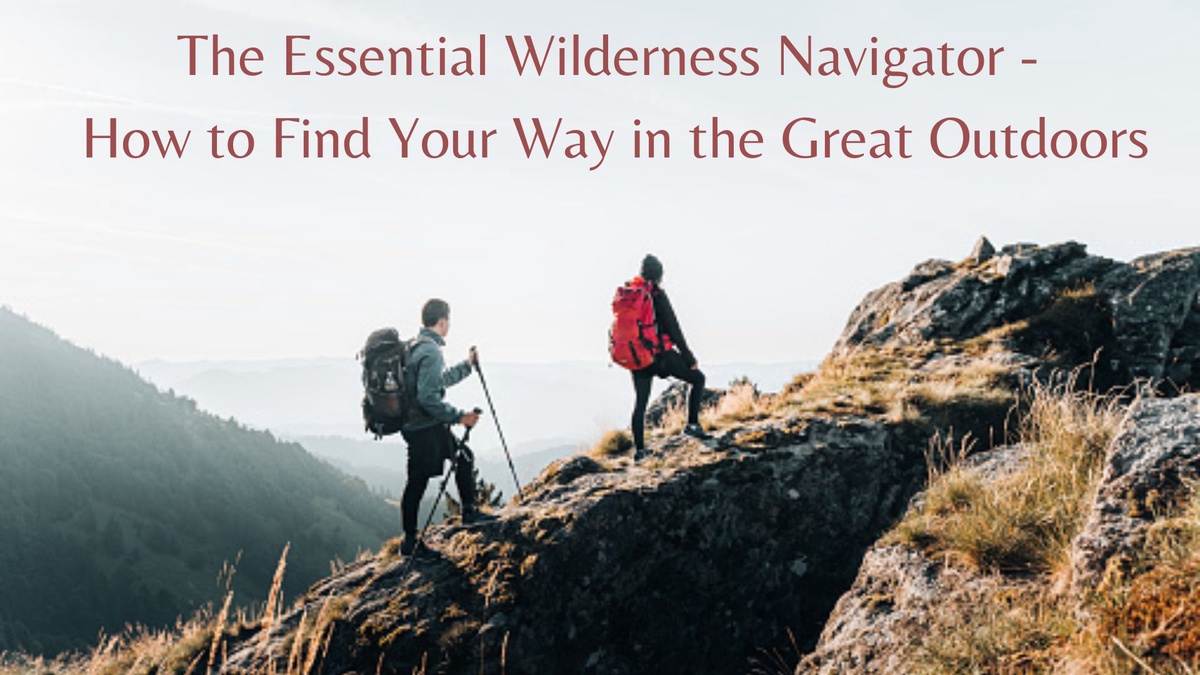The wilderness can be a beautiful and exhilarating place, but it can also be dangerous if you don't know how to navigate it. The Essential Wilderness Navigator is a comprehensive guide to navigating in the wilderness that covers all of the essential skills you need to know to stay safe and get where you want to go.
One of the most important skills you will learn from this book is how to read a map. Maps are essential tools for wilderness navigation, and the book covers everything from basic map reading skills to more advanced techniques like triangulation. You'll also learn how to use a compass to navigate, including how to take bearings and navigate along a specific route.
Another important skill covered in the book is the use of natural signs to navigate. Natural signs can be anything from the position of the sun in the sky to the way trees are growing, and they can be used to orient yourself and determine your location. The book provides detailed information on how to use natural signs to navigate, including how to read the position of the sun and stars, and how to use the lay of the land to determine your location.
The Essential Wilderness Navigator also covers celestial navigation, which is the use of the stars and planets to determine your location. This is an advanced technique that requires a good understanding of astronomy, but it can be incredibly useful in situations where other navigation tools are not available.
In addition to teaching you how to navigate, the book also emphasizes the importance of safety in wilderness navigation. You'll learn how to avoid getting lost, what to do if you do get lost, and how to stay safe in a variety of wilderness environments. The book provides practical tips on everything from what to pack in your backpack to how to deal with emergencies in the wilderness.
How to Find Your Way in the Great Outdoors: -
The great outdoors can be a thrilling and beautiful place, but it can also be dangerous if you don't know how to find your way. Whether you're hiking, camping, or simply exploring, knowing how to navigate in the wilderness is essential for your safety and enjoyment. Here are some tips on how to find your way in the great outdoors.
Get a Map and Compass: Getting a map and compass is an essential first step for anyone looking to navigate in the wilderness. A map and compass are the most basic navigation tools, and they can help you find your way even in the most remote locations. Before heading out, make sure you have a detailed map of the area you'll be exploring, as well as a compass. Learn how to read the map and use the compass before you go, and make sure to bring them with you on your adventure.
Know Your Landmarks: Knowing your landmarks is an important part of wilderness navigation. Landmarks are distinct features in the landscape that can help you orient yourself and find your way. Look for prominent landmarks on the map and try to identify them in the landscape. This can help you stay oriented and know where you are at all times. Prominent features like mountains, rivers, lakes, and rock formations are good landmarks to look for. These features are usually easy to spot on a map and can help you determine your location and direction.
Pay Attention to Trails: Trails are an important part of wilderness navigation, especially in areas where there are established routes for hikers and backpackers. Paying attention to trails can help you stay on course, find your way back to a trailhead, and avoid getting lost. If you're following a trail, pay close attention to trail markers, signs, and landmarks. Make note of any turns or intersections so you can find your way back.
Use Natural Signs: Using natural signs is an important part of wilderness navigation, especially in areas where there are no established trails or landmarks. Natural signs are features in the environment that can help you navigate, such as the position of the sun or the direction of the wind. Learn how to use natural signs like the position of the sun and stars, the direction of water flow, and the growth patterns of trees and plants to help navigate. These signs can help you determine direction and location even if you don't have a map or compass.
Bring Backup: In case of emergency, bring a backup navigation tool like a GPS or a phone with a navigation app. Make sure to keep them charged and bring extra batteries. Always bring more food and water than you think you will need. In case of an unexpected delay, having extra supplies can be a lifesaver. Accidents can happen, and it is important to be prepared. A first aid kit should include items such as bandages, antiseptic, pain relievers, and any necessary prescription medications.
Navigating in the wilderness can be a challenging but rewarding experience. With these tips, you'll be able to find your way and enjoy the great outdoors safely and confidently.


No comments yet